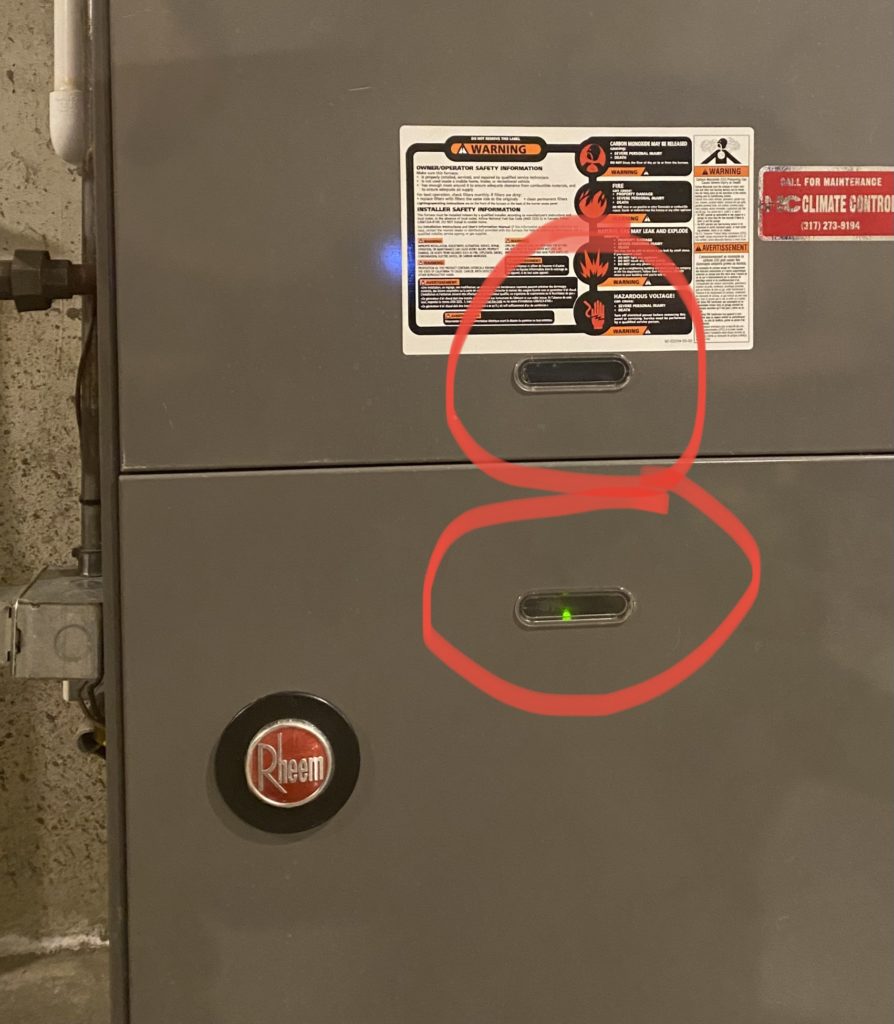Introduction
Majority of homeowners we run into are aware if they have a furnace; however, many of those homeowners couldn’t even begin to tell you how to troubleshoot the furnace if something were to go wrong with it. In this article, we will help you identify if you have a gas furnace. Once you’ve identified your heating system, we will then provide some basic information about the gas furnace parts. The information provided will help you make informed decisions if your heating unit were to ever stop working properly during this cold weather.
Identifying Gas Furnace
You should see a small window on the front of the furnace (picture below). The windows are not just for decoration, it allows you to see a few things going on with your furnace without having to open the access panel.

Notice the two small windows in the red circles? A gas furnace uses burners to generate heat. You should be able to see a blue flame in the top window of this paticular unit (whenever your home is heating up). Alothough the furnace is gas, it still has a few electrical components. The green light in the picture above lets us know that the unit has power. This green light also can communicate by code, what is going on with your furnace. Airtronic Heating & Cooling has a really good troubleshooting flow chart for the codes on this particular unit.
Gas Furnace Parts
Now lets help you become more familiar with your furnace by identifying some important parts.
1. Thermocouple – Get very familiar with this part. The thermocouple is a safty piece that detects if the unit’s pilote light is lit or not. It signals to the gas valve to open or close for gas flow. This metal rod is located near the burners in the unit. Many times, the difference between heat and no heat in your home can be by simply following saftey poceedures and whiping the dust off this medal rod so the sensor can work properly.
2. Limit switch – This switch reads the furnace’s temperature. If the unit is too hot, the switch turns off the gas for safty reasons.
4. Air Pressure switch – This is another switch that has the control to not allow gas flow. This switch determines if the inducer motor is on so carbon monoxide build up can be pushed through the vent pipe.
5. Furnace fuses – The furnace uses multiple fuses. Being able to properly locate your fuses can be the difference between your furnace working properly or not. If a fuse is blown, simple change it.
6. Air Furnace Filter – It’s important you keep a clean filter for your furnace. It could need changed once a month or once a year, depending on the filter size. There’s also other filter alternatives that don’t need replaced. They might coast more up front; however, they could save you money in the long run by not having to keep buying replacements. Consult w/ local professionals like The Peterman Brothers for alternative filter options.
7. Thermostat – Always check this before you worry about any of the above items. The thermostat is the brains behind your home’s heating system. This brain has the ability to program the heat settings in your home. It’s always possible the settings need adjusted if your home isn’t heating properly.
Links to Useful Troubleshooting videos
This video not only provides a good break down of some troubleshooting steps for a gas furnace. It also provides a list of refrence videos on troubleshooting the furnace parts we went over above.
Conclusion
I’m no heating and cooling professional. The purpose of this article is to help you get more familiar with your furnace so you’ll be able to safely troubleshoot and identify simple fixes. Having your heat go out during these winter months can be very stressful when you have no clue why it’s not producing heat. Hopefully this short article and linked resources could be of help.
